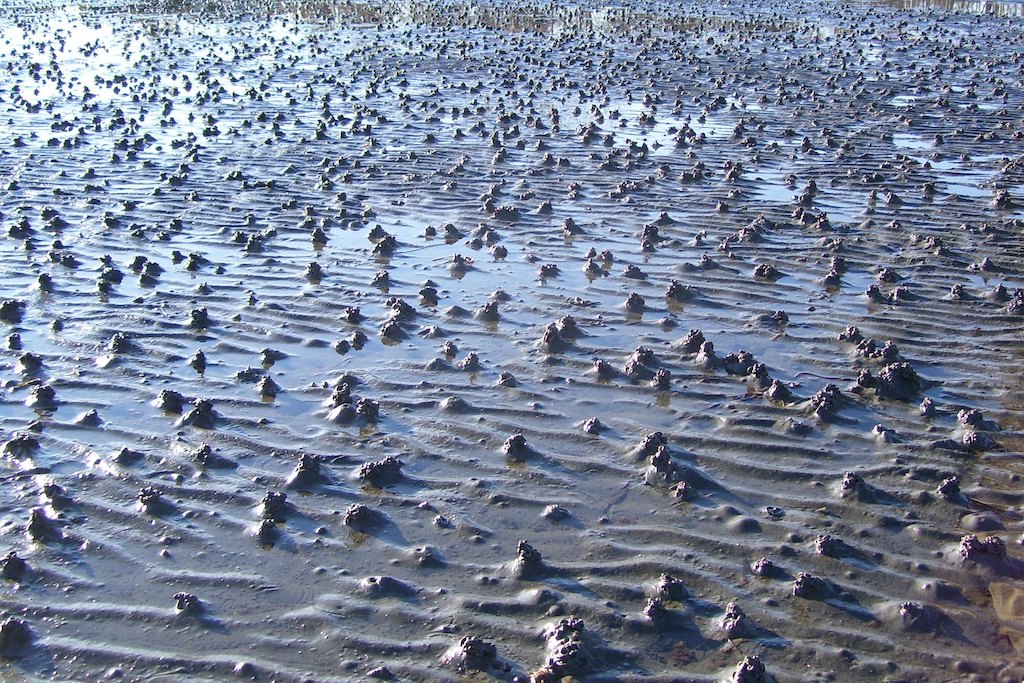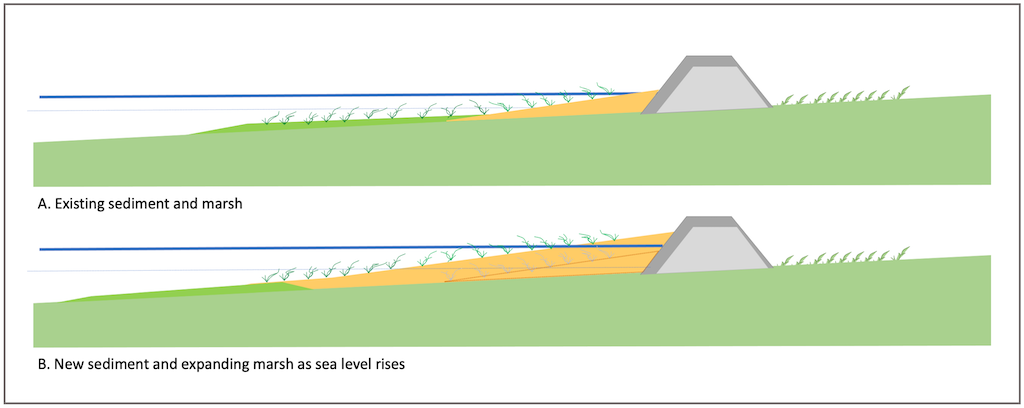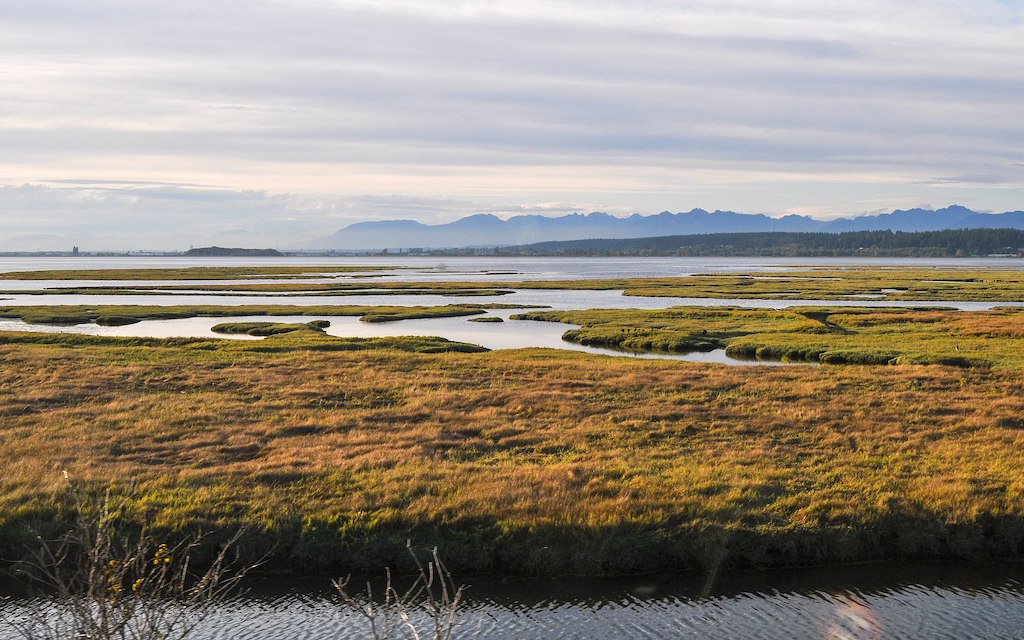Every year, 45 cubic meters of sediment arrive for every meter along a stretch of shoreline in Boundary Bay, near the U.S.-Canada border on the eastern shore of the Salish Sea. The volume is equivalent to the capacity of two and a half tandem trucks, a type of large dump truck commonly used in construction projects. But the sediment at Boundary Bay is not delivered by tandem trucks. It’s transported by worms, shrimps, and ducks, in tandem with winds and tides.
The activities of living organisms, primarily the relentless feeding and excreting of obscure intertidal invertebrates, represent a “biogenic sediment machine” that may be a key contributor to salt marsh formation and resilience, says John Readshaw, a coastal engineer with SNC Lavalin, Inc., who presented the findings at the 2022 Salish Sea Ecosystem Conference on April 27.
The unexpected discovery grew out of regular ‘walkabouts’ that Readshaw and marine wetlands biologist Gary Williams have been making since last May around the mudflats and salt marsh near 96th Street in Delta, British Columbia. The location is the site of a planned pilot project for a ‘living dike,’ a nature-based approach to shoreline protection that is designed to grow, shift, and self-heal as sea level rises. Other living dikes are being built along the U.S. Gulf Coast and in the Netherlands, where engineers hope the structures will provide better protection from storm surge and floods than conventional dikes and seawalls. The sediments can also protect marshes from being inundated as they get squeezed against existing hard armor.




